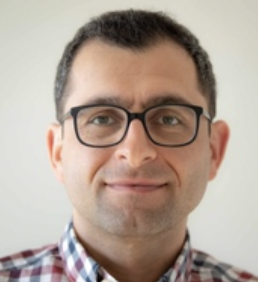It’s no secret that Australia is in the grip of a teacher workforce crisis. The federal government review has revealed a shortfall of over 4,000 teachers, while reports and media headlines continue to highlight “critical teacher shortages”, “fears students will suffer as burnout contributes to ‘unprecedented’ teacher shortage” and other alarming trends. Amid this national narrative of crisis, one question is rarely asked: What about the schools that are managing to retain their teachers? What can we learn from them? What succeeds in teacher retention?
Rewriting the Narrative
Much of the current research and policy debate has rightly focused on why teachers are leaving the profession. The Australian Education Union’s 2024 State of Our Schools survey highlights chronic underfunding, excessive workloads, administrative overload, declining wellbeing, occupational violence, and limited career progression as key factors driving teachers out of the classroom.
But understanding what’s driving teachers away is only half the story. The other half, arguably the more actionable part, lies in what enables teachers to stay.
We thus need to balance the debate by asking not only ‘Why are some teachers leaving?’ but also ‘How are some schools managing to keep their teachers, despite all the odds?’
This shift in perspective opens the door to learning from the ‘success stories’.
Learning from the Schools Getting Teacher Retention Right
There is a plethora of research on why teachers leave. And yes – workload, burnout, inadequate support, limited career pathways and housing stress all play major roles. It’s vital that we continue to examine these factors.
But when the national conversation remains stuck on what’s going wrong, we risk missing the bigger picture: learning from some schools that are getting it right.
Across Australia, in the very places hardest hit by staffing shortages, remote towns, outer suburbs, low socio-economic communities, some schools are quietly bucking the trend. They’re not just holding onto teachers; they’re building stable, collaborative staff cultures where teachers stay and thrive.
These schools are not unicorns. They are real and they exist in the same policy and funding environments as those struggling with attrition. What sets them apart are the ways they’ve created spaces and structures that help their teachers stay the course.
Yet, these stories rarely make the headlines.
Where Community Keeps Teachers
Some schools are keeping their teachers not through flashy incentives, but by building strong local connections. Our recent research found that in hard-to-staff schools, what makes the difference is context, knowing the community, responding to students’ real lives, and creating a culture of care.
In one rural Victorian school, one principal talked about success coming from “translating” teaching to fit students’ needs and building trust with families, many of whom had negative experiences with school themselves.
Another principal in outer Melbourne talked about the power of “boots on the ground” leadership, being present, responsive, and deeply embedded in the school community.
These schools don’t rely on top-down rules. They focus on relationships, inclusion, and flexibility. And it’s working. They’re holding onto their new teachers because those teachers feel connected, supported, and valued in their school communities.
In our Queensland case studies, what stood out was the basics done well. When schools offered practical support such as affordable housing and child care, paired with strong, empathetic leadership and a culture that trusted teachers to use their professional judgement, something powerful happened. Teachers stayed.
Teachers told us they had the autonomy to do what they came into the job to do: make a real difference in the lives of kids. It’s about creating the conditions where teaching feels possible, purposeful, and sustainable.
Ditch the Deficit Talk
For too long, discussions about hard-to-staff schools are being dominated by a deficit narrative. We hear that “no one wants to teach there”. Or that “students are too difficult”, or that “nothing can be done unless the entire system changes”. These narratives paint an unfair picture of the students and communities. And they also risk devaluing the incredible work being done by teachers and leaders who are making a difference in these schools and their communities.
Focusing only on what’s broken can be deeply demoralising for those working in the system. It can lead to policy solutions that treat schools as sites of failure, rather than places of potential.
A more productive approach is to ask: where is retention working, and why?
By highlighting success stories, schools that have achieved relative workforce stability even in high-turnover contexts, we can identify practical, replicable strategies. We can also challenge the myth that teacher attrition is inevitable in certain places.
Let’s Celebrate What’s Working
It’s time we give credit where it’s due. There are principals across Australia who have created supportive, empowering work environments despite resource constraints. And there are teachers who stay, not out of obligation, but because they feel connected, respected, and supported in their professional growth. There are communities that rally around their local schools to ensure teachers feel welcomed and valued.
These efforts deserve recognition, not just as heartwarming exceptions, but as serious sources of insight.
Learning from what’s working allows us to shift from damage control to positive change. It equips other schools, policymakers, and education departments with ideas grounded in real-world experience. Most importantly, it gives the teaching profession, and the students who depend on it, something increasingly rare: hope.
To be clear, naming and addressing the problems driving teachers out of the profession is still essential. But we can’t afford to dwell solely on the negative. A deficit-only narrative will not lead to change. What we need now is a dual approach, one that recognises what’s wrong, and builds on what’s strong.
Let’s start recognising the schools that are holding on to their staff. And let’s amplify the voices of teachers who choose to stay. Let’s look beyond the crisis headlines and ask: what can we learn from the schools that have found ways to build a stable teaching workforce?
Amid the crisis talk, there are quiet successes all around us. We just need to start listening.
Bios

Babak Dadvand is a senior lecturer in pedagogy, professional practice and teacher education at La Trobe University, Australia. His research focuses on issues of equity and social justice in education, with a particular emphasis on preparing and supporting teachers to work in underserved and hard-to-staff school settings.
Steve Murphy is a senior lecturer at La Trobe University and is informed by his experience as a teacher and educational leader in rural primary and secondary schools. His research focuses on teaching and school leadership practices. He is particularly interested in practices contributing to students’ engagement and achievement in STEM education.
Terri Bourke is dean/head of school and professor at Queensland University of Technology and researches professional standards, professionalism, accreditation processes and diversity in education.
Reece Mills is an associate professor of education. He commenced his career in education as a secondary school science teacher before being appointed at QUT. Reece’s research aims to create ecologically and socially sustainable futures through education.
Scott Eacott is professor of education at UNSW Sydney. His current research looks at the systemic implications of housing and transport affordability for the teaching workforce.
Juliana Ryan is a senior lecturer in Teacher Education and Ethics in the School of Education at La Trobe University. Her deliberately diverse career has been shaped by a belief in the importance of social equity in and through education. Juliana has taught in community, carceral, vocational and university settings.


























